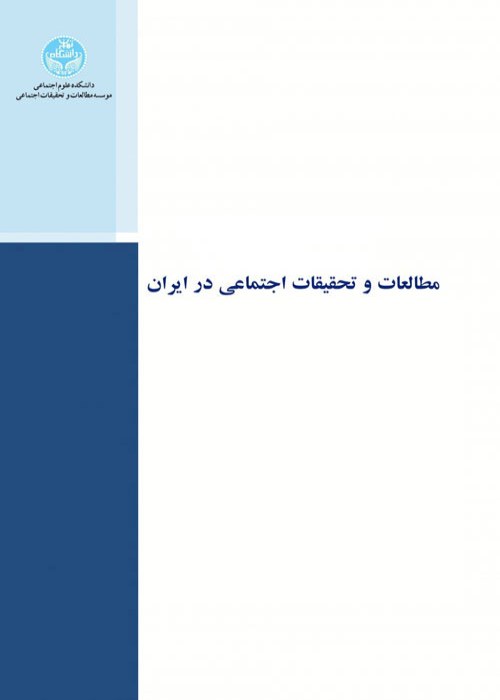Sociological study of the relationship between development and crime in Hamadan province
Author(s):
Article Type:
Research/Original Article (دارای رتبه معتبر)
Abstract:
Introduction
Development is a process that leads to human domination of nature and the environment, and changes in lifestyle, social relationships, different emotional conditions, and new attitudes. In addition, in developing countries such as Iran, there are problems such as growth in crime commitment which is the result of the confrontation between modernity and adherence to the past traditions and customs. Hamedan province, like other provinces of the country, follows the rule of center-periphery, so that most economic activities are concentrated in Hamedan city. Meanwhile, all the cities of Hamedan province each have different potentials for investment and sustainable development. On the one hand, this situation has caused population movements to the city of Hamedan and on the other hand, it has caused the underdevelopment of other cities in the province.Method
The present study aims to investigate the relationship between development and crime in social, cultural and economic dimensions in Hamadan province by secondary analysis method. The collected data were analyzed using Excel, GIS and SPSS software and different levels of development of the cities of Hamadan province were determined by TOPSIS method. The statistical population in this study is 9 cities of Hamedan province, namely Hamedan, Malayer, Nahavand, Asadabad, Tuyserkan, Bahar, Kaboudar Ahang, Razan and Famenin. Due to the fact that the size of the statistical population is limited (9 cities of the province) and also the number of samples and the statistical population are equal, the census method was used.Findings
In terms of development, the city of Hamedan has a favorable situation, the cities of Malayer, Bahar and Nahavand are semi-privileged, the cities of Tuyserkan and Kaboudar Ahang have a low status and the cities of Famenin, Asadabad and Razan have been deprived. In terms of development rank, Hamedan, Malayer and Bahar counties had the highest and Razan, Asadabad and Famenin counties had the lowest development rank among the counties of Hamedan province, respectively. Also, in terms of general crime levels, Hamedan, Malayer and Tuyserkan cities had the highest crime rate and Famenin, Razan and Kaboudar Ahang cities had the lowest crime rate among the cities of Hamedan province, respectively. The findings showed that there is a significant direct relationship between development (and its social, cultural and economic dimensions) and crime (and its social, cultural and economic dimensions).Conclusion
Although economic, social, and cultural development has its benefits, if it is uneven and unequal, it has negative consequences, including an increase in crime .Therefore, it can be said that development in the cities of Hamadan province has ominous fruit of the spread of crime. In this regard, it is necessary to analyze the place of criminal policies and policies in macro development programs, crime reduction as one of the main issues in achieving development goals and greater synergy and convergence of criminal policies and development to be considered by planners and policy makers.Keywords:
Language:
Persian
Published:
Quarterly of Social Studies and Research in Iran, Volume:10 Issue: 4, 2021
Pages:
1093 to 1121
magiran.com/p2369585
دانلود و مطالعه متن این مقاله با یکی از روشهای زیر امکان پذیر است:
اشتراک شخصی
با عضویت و پرداخت آنلاین حق اشتراک یکساله به مبلغ 1,390,000ريال میتوانید 70 عنوان مطلب دانلود کنید!
اشتراک سازمانی
به کتابخانه دانشگاه یا محل کار خود پیشنهاد کنید تا اشتراک سازمانی این پایگاه را برای دسترسی نامحدود همه کاربران به متن مطالب تهیه نمایند!
توجه!
- حق عضویت دریافتی صرف حمایت از نشریات عضو و نگهداری، تکمیل و توسعه مگیران میشود.
- پرداخت حق اشتراک و دانلود مقالات اجازه بازنشر آن در سایر رسانههای چاپی و دیجیتال را به کاربر نمیدهد.
In order to view content subscription is required
Personal subscription
Subscribe magiran.com for 70 € euros via PayPal and download 70 articles during a year.
Organization subscription
Please contact us to subscribe your university or library for unlimited access!



